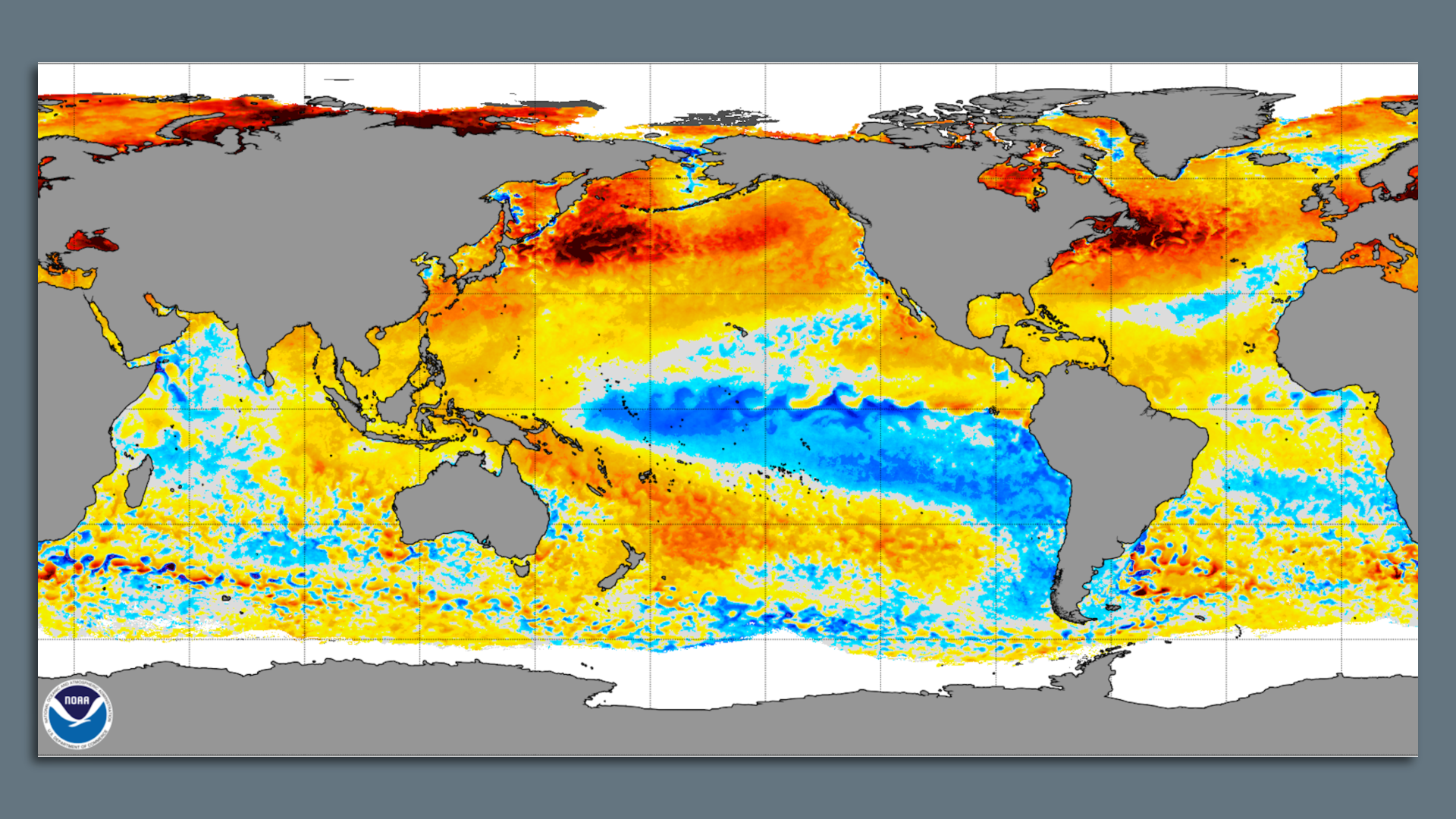| |
| |
| |
| |
| |
| Axios Generate |
| By Ben Geman and Andrew Freedman · Aug 31, 2022 |
| 🐪 Happy Wednesday! Today's newsletter, edited by Carlos Cunha, has a Smart Brevity count of 1,210 words, 4.5 minutes. 🚨47 million people are under heat warnings in the West because dangerous, record-shattering temperaturs are in store for Labor Day weekend, particularly in California. 🎶 At this moment in 1991, Metallica's's self-titled album hit No. 1 on the Billboard charts and has today's intro tune... |
| |
| |
| 1 big thing: U.S. solar factories prepare for liftoff |
 |
|
| Illustration: Aïda Amer/Axios |
| |
| U.S. solar equipment manufacturing is about to grow, but there are miles to go before reaching the White House goal of becoming a global heavyweight, Ben writes. Driving the news: First Solar said Tuesday it is planning to invest up to $1 billion in a new panel factory in the southeast . - The company is also spending nearly $200 million to expand production in Ohio.
Why it matters: It's among several early signs the new climate law will sway investment. - It created new tax breaks for clean energy manufacturing projects, and extended incentives for generation projects.
- CEO Mark Widmar wrote the law has "delivered precisely the durable solar industrial policy that we've long advocated for."
- SPI Energy last week cited the law in announcing new solar wafer manufacturing plans.
The big picture: Analysts expect billions of dollars in incentives will spur other new announcements and help bring tentative plans to fruition. - "We expect that solar companies will prioritize bringing new ingot, wafer and module factories to the U.S.," Pol Lezcano, BloombergNEF's lead North American solar analyst, said via email.
- "There is definitely going to be a boom in domestic manufacturing," Sylvia Leyva Martinez, a senior Wood Mackenzie analyst, tells Axios.
- She said the combination of the manufacturing tax credits and extended credits for building new generation projects will work in concert.
- The Solar Energy Industries Association, in a report, said the law could help lift U.S. manufacturing to 50 gigawatts of capacity by 2030 (but also cautions on several pitfalls).
Yes, but: The U.S. remains far behind China and other regions in the supply chain for panels and other equipment. - Chinese manufacturers made 180 gigawatts worth of panels last year, per BloombergNEF.
- In 2021 the U.S. manufactured enough panels to provide 8 gigawatts of generating capacity, Lezcano said.
- BloombergNEF is tracking another 7 gigawatts already announced or under construction by companies including Hanwha Q Cells and First Solar.
What we're watching: How many more projects materialize — and when. - Martinez notes companies need specifics from the IRS on the tax programs. Developers also need to find adequate sites, among other steps, she said.
|
    |
| |
| |
| Bonus: Charting the global solar picture |
 Data: International Energy Agency; Chart: Kavya Beheraj/Axios This chart, adapted from IEA's solar supply chain analysis, highlights China's dominance, Ben writes. "China and Southeast Asia will continue to make solar components at a much lower cost. But U.S.-made components should be cost-competitive with Asian products after subsidies," BloombergNEF's Lezcano said. |
    |
| |
| |
| 2. Pakistan floods' likely link to climate change |
 |
|
| Before and after satellite image showing damaging floods in and around Gudpur, Pakistan in August. Source: Maxar Technologies |
| |
| Floodwaters continue to inundate large parts of Pakistan, particularly in Sindh and Balochistan Provinces, where August rainfall in some areas was nearly 500% of average, Andrew writes. The big picture: Pakistan's urgent needs for outside aid are becoming clear. At least 33 million have been affected by the floods, and the monsoon season is not over. Context: The extreme monsoon rains, which have been relentless, are likely to have ties to climate change, Fahad Saeed, a climate scientist with Climate Analytics based in Islamabad, tells Axios in an interview. - This is due to the increased moisture-carrying capacity of the atmosphere as temperatures increase. Pakistan is also extremely vulnerable to natural and climate-enhanced disasters.
- Saeed said researchers will conduct an attribution study to determine climate change's contribution to this disaster more precisely.
The big picture: Pakistan contributes less than 1% to global greenhouse gas emissions yet is suffering greatly from its consequences. - The country will head up the bloc of developing countries at the U.N. climate talks in Egypt in November, and the flooding will add a sense of urgency to resolve one of the thorniest issues.
- Developing countries are seeking compensation for the damage they have incurred due to climate change the industrialized nations have caused.
Read the whole story |
    |
| |
| |
| A message from Axios |
| The Axios Pro Labor Day Sale |
| |
 |
| |
| There's never been a better time to become an Axios Pro subscriber. How it works: Get your first Axios Pro newsletter tomorrow, plus exclusive event invitations, networking opportunities and more. Offer ends September 6th. Use code LABORDAY at checkout to get $300 off your subscription. |
| |
| |
| 3. 🏃🏽♀️Catch up fast on tech finance |
| 🔋Toyota this morning said its investing roughly $2.5 billion to expand battery manufacturing in North Carolina for electric and hybrid vehicles, Ben writes. - Why it matters: The plan is the latest in a wave of battery plants planned in the U.S. as automakers ramp up electric vehicle production.
- Catch up fast: Honda and LG Energy Solution said Monday they're investing $4.4 billion in the U.S.
💰Copenhagen Infrastructure Partners this morning said it has closed its CI Energy Transition Fund I at a cap of roughly $3 billion. - A key focus is tech that helps decarbonize "hard to abate" sectors like chemicals, steel and shipping.
🛰️ Accenture is investing an undisclosed sum in Pixxel, a satellite startup whose remote imaging tech has ecological and climate applications in areas like crop and forest monitoring. |
    |
| |
| |
| The persistence of fossil fuel subsidies |
 Data: OECD, IEA; Note: 2021 value is preliminary; Chart: Simran Parwani/Axios The world just can't quit fossil fuel subsidies despite years of calls to action by lots of countries, international agencies and NGOs, Ben writes. Why it matters: New data highlights governments' struggle to fight climate change while helping people slammed with high energy costs. Driving the news: Government support for fossil fuel consumption and production across 51 major economies rebounded to an estimated $697 billion in 2021. - That's a joint tally from the OECD and the International Energy Agency.
- The vast majority is support for fuel consumers. It's slated to grow again this year amid higher prices and demand.
What they're saying: The agencies called for reforming subsidies in a way that protects consumers while also curbing fossil fuel demand. The "lasting solution" is stronger clean energy investment that cuts consumers' exposure to high fuel costs, IEA head Fatih Birol said in a statement. |
    |
| |
| |
| 4. The big nuclear rethink |
 |
|
| Illustration: Gabriella Turrisi/Axios |
| |
| Twin energy and climate crises are forcing governments around the world to take a fresh look at nuclear power, Axios' Matt Phillips reports. Why it matters: Pressure on politicians to find reliable, low-carbon power supplies has them reconsidering the long-standing stigma surrounding nuclear plants. State of play: For now, that means rethinking already-planned retirements of reactors. Read the whole story |
    |
| |
| |
| Rare triple-dip La Niña officially forecast |
 |
|
| Sea surface temperature departures from average worldwide, showing cooler-than-average waters in the central and eastern tropical Pacific. Source: NOAA |
| |
| The Northern Hemisphere is in for a third fall and winter in a row with La Niña conditions in the tropical Pacific Ocean, which will influence global weather patterns, the World Meteorological Organization (WMO) said this morning, Andrew writes. Why it matters: La Niña events tend to boost late summer and fall hurricane activity in the tropical Atlantic and increase the odds of drought in the Southwest and Texas. - They also keep global average temperatures slightly cooler than they otherwise would be due to human-caused global warming.
- Such events tend to favor drought in the Horn of Africa, where a deadly famine is brewing.
Between the lines: The WMO, a UN agency, is calling for 70% odds of a triple-dip La Niña, the first such occurrence this century. These events are characterized by cooler than average sea surface temperatures in the equatorial Pacific Ocean. - Typically, La Niña events transition to neutral or El Niño conditions by now, rather than risk overstaying its welcome for a third fall and winter season.
|
    |
| |
| |
| A message from Axios |
| The Axios Pro Labor Day Sale |
| |
 |
| |
| There's never been a better time to become an Axios Pro subscriber. How it works: Get your first Axios Pro newsletter tomorrow, plus exclusive event invitations, networking opportunities and more. Offer ends September 6th. Use code LABORDAY at checkout to get $300 off your subscription. |
| |
| 📬 Did a friend send you this newsletter? Welcome, please sign up. 🙏Thanks for reading and we'll see you back here tomorrow. |
 | | Why stop here? Let's go Pro. | | |










No comments:
Post a Comment